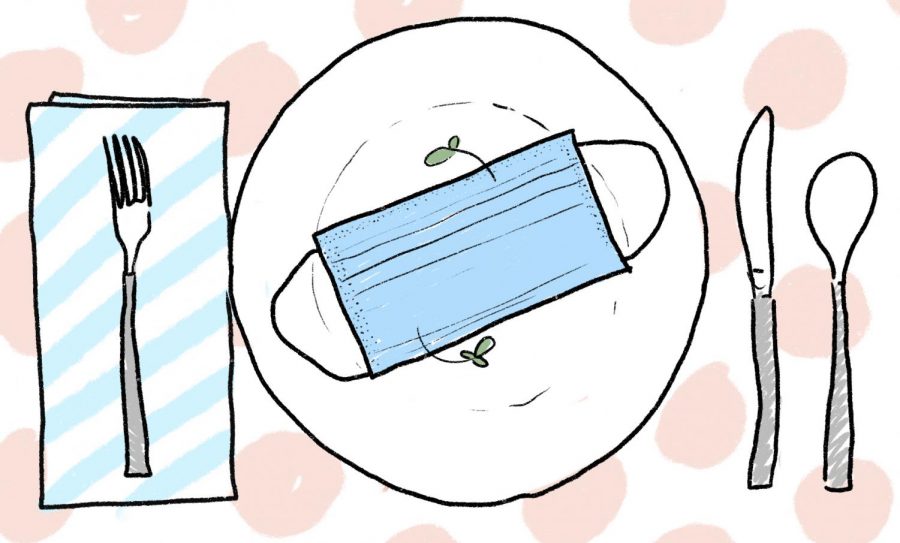How a Food Journalist Survived the Pandemic
June 22, 2021
Over the past year, the food industry has been forced to navigate challenging times due to the COVID-19 pandemic. The total restaurant profits for 2020 were 240 billion dollars below the pre-pandemic forecast for the year, and since December 1st 2021, over 110,000 restaurants and bars have permanently closed. Alongside restaurants, the entire food industry has been completely upended, including farmers, fisheries, food distributors, equipment retailers, and less conspicuously, food journalists, a profession intimately involved with the intricacies of the dining business. Instead of reporting on new and exciting dishes or celebrating newcomers and talented chefs, food journalists have had to readjust to the reality of the situation and find new ways to engage with the decimated industry. Not only did they have to cope with a loss in readership, but they also had to find the right tone and words to show support and sensitivity to the imperiled restaurant community. Food writers have had to “change the names, introductions, and general vibe of some of the core maps to be less about what’s ‘hot’ and more about which restaurants were making interesting pandemic ‘pivots,’” said Rachel Blumenthal, editor of Eater Boston, in an interview with the Register Forum. She continued, “It didn’t feel right updating a map of ‘where to find the best burgers in Boston,’ for example, when lives were being lost and there was so much uncertainty around the fate of so many restaurants and jobs.”
Commenting on a separate-but-related effect of the pandemic, Blumenthal notes that “the restaurant industry has undergone one of the biggest reckonings” she has ever seen in her career. After decades of unfair and misogynist practices, she added that “there’s been a feeling of, well, COVID shut down so much of the industry, so what better time to tear the rest of it down and rebuild from the ground up?” Citing Bon Appétite as a perfect example, she highlights a situation in which information came out about the sexism and racism that was embedded into the structure of the company, and resulted in over half the staff quitting. This is only one example of toxic restaurant environments that have now come to light. Blumenthal hopes that food journalism will continue this self-scrutiny and “look inward at itself to tear down what isn’t working and rebuild to be much more inclusive.”
One thing that did remain constant in the life of the food reporter, however, was remote work, a longstanding practice. However, an absolutely crucial element of their job was taken by COVID: the in-person dining experience. During the pandemic, food journalists have had to rely on take-out and delivery, each with their own sets of obstacles: presentation, which is usually such a crucial part of the meal; temperature, which cannot be controlled as the food is served at great distances; and the fact that some kinds of meals simply cannot travel well. For food journalists, navigating these difficult times requires a lot of patience and a knack for ordering.
Blumenthal’s pandemic situation was also unique, as she learned she was pregnant in March of 2020, making her still uncomfortable going into restaurants today. Her pregnancy also changed her relationship with food. “Now that I’m older and a parent, I don’t see myself dining out nearly as much in the future or spending as much time (and money) at trendy hotspots,” although she speculated that in the future she will focus more on quiet neighborhood favorites while continuing to do takeout and delivery. This shift in her family dynamic also makes her more excited to write family-friendly content.
The pandemic period has witnessed a general decrease in the number of food articles published, not because there is less information coming out; but rather, because articles coming out now are longer and more serious than the short, fun articles that a year and a half ago made up a lot of the published work. Blumenthal thinks this is mainly because of the “change in tone; at least in the very dark early months of the pandemic, it felt inappropriate to publish quick, fun, stuff and instead we felt an obligation to deeply report serious issues.” This sense of obligation still looms, also because everyone has faced personal hardship during these times, and like so many others, food writers may not be in the proper headspace to write about such upbeat things.
As we start to transition back into “normal” life, food journalists have been making some adjustments as well. Blumenthal says, “we’ve definitely started returning to some aspects of our pre-COVID coverage that we abandoned for a while, easing back into writing about ‘hot’ new restaurants, covering a lot of openings, and doing other content that is more fun than serious. We’re also getting back into coverage that isn’t exclusively about takeout/delivery options.” The optimism from a restaurant veteran like Blumenthal gives hope that local establishments in Cambridge and beyond will be able to thrive once again.











